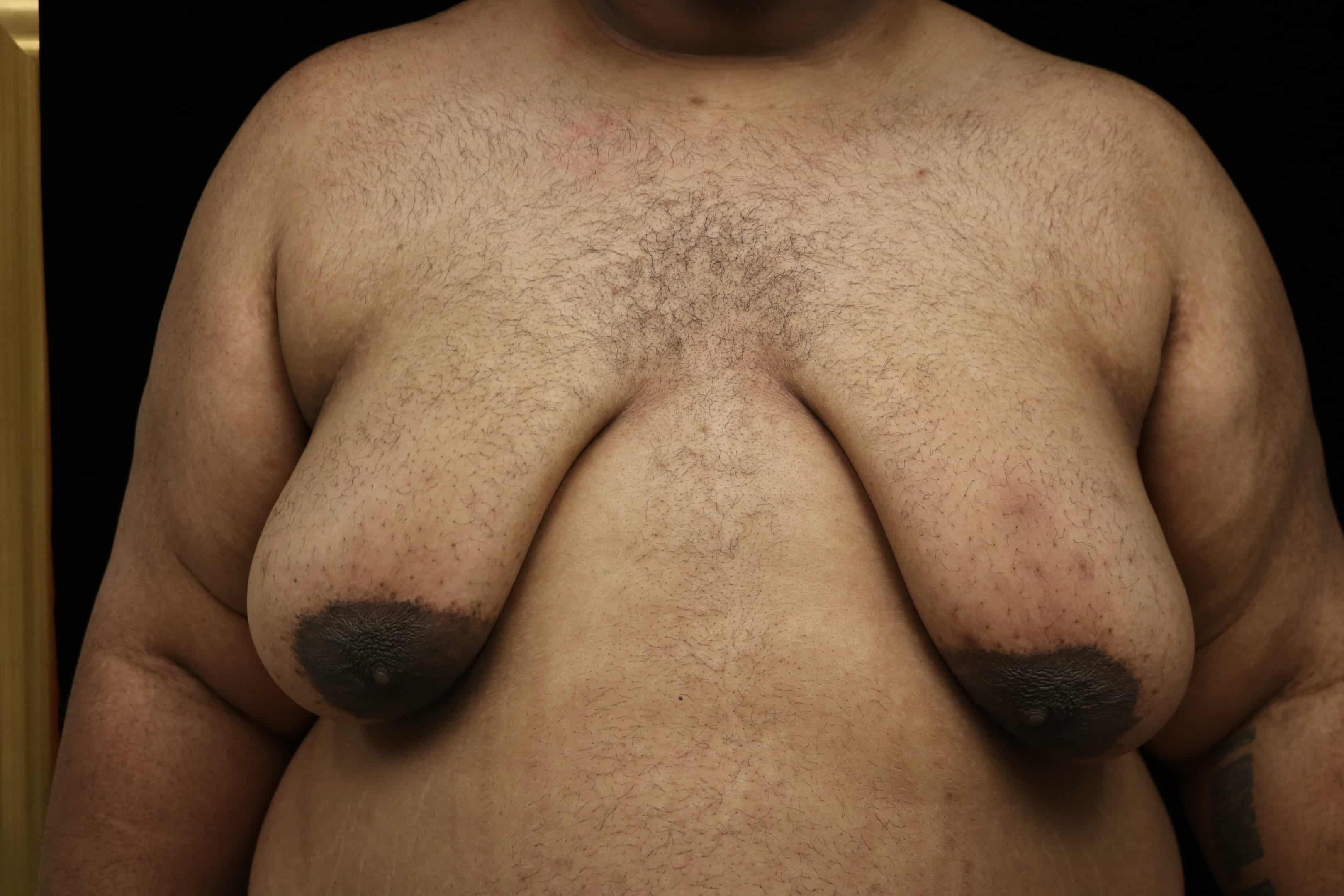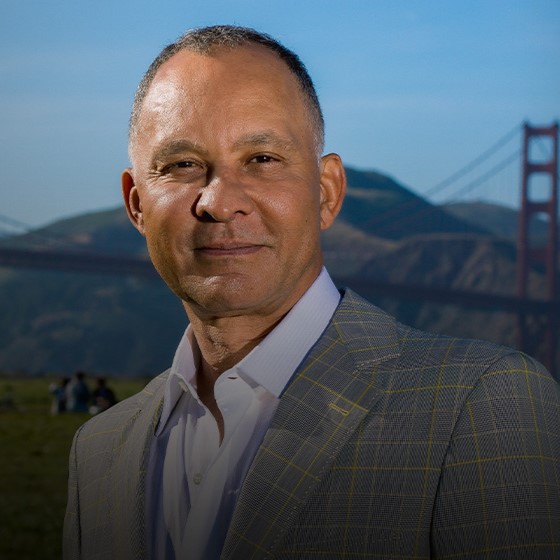The decision to address gynecomastia through surgery is an extremely personal one—more than just a cosmetic choice, it’s often a step toward reclaiming confidence and comfort in your own body. Gynecomastia is a condition of overdeveloped or enlarged breasts in men that can occur at any age. Surgery for gynecomastia is technically called reduction mammaplasty or male breast reduction surgery, a procedure designed to reduce breast size and improve chest contours. Your initial consultation with a plastic surgeon serves as the foundation for this journey, making thorough preparation absolutely critical for achieving the best possible outcome.
Preparing for your gynecomastia consultation involves more than just attending an appointment. The quality of your preparation directly impacts the surgeon’s ability to assess your condition, recommend appropriate treatment options, and develop a surgical plan tailored to your specific needs. Gynecomastia can cause emotional discomfort and impair self-confidence in men, making it even more important to approach the consultation process with care. Some men with gynecomastia may avoid certain physical activities and intimacy to hide their condition. A well-prepared patient not only gets better results but also feels more confident and informed throughout the entire process.
This comprehensive guide will walk you through every aspect of consultation preparation, from gathering essential medical information to asking the right questions that ensure you choose the best surgeon for your male breast reduction surgery. Male breast reduction is the only consistently effective treatment for gynecomastia that has long-lasting results.
Key Takeaways
- Bring a complete medical history, including current medications, supplements, and previous surgeries
- Prepare to discuss your specific concerns, goals, and expectations for gynecomastia surgery
- Research your surgeon’s credentials, board certification, and experience with male breast reduction
- Compile insurance information and understand coverage options for gynecomastia treatment
- Plan to ask detailed questions about surgical techniques, risks, recovery timeline, and costs
- Be prepared for a physical examination and possible medical photography
- Allow 60-90 minutes for a comprehensive consultation appointment
- You may need to stop taking certain medications, such as blood thinners, prior to surgery
Medical Information to Gather Before Your Appointment
Your medical history provides crucial information that influences both your candidacy for gynecomastia surgery and the specific approach your surgeon will recommend for you. Gathering this information beforehand ensures your consultation time is used efficiently and helps prevent any delays in your treatment planning.
Please ensure that you bring or update your medical records so that all relevant health information is available for your consultation. Providing your complete medical record allows the surgeon to thoroughly review your medical history as part of the pre-surgical assessment.
Complete Medication List
Document every prescription medication you currently take, including dosages and frequency. This information is vital because certain medications can increase the risk of bleeding during surgery or interact with anesthesia. Your plastic surgeon needs to be aware of any blood thinners, hormonal treatments, or medications that may impact your healing process.
In addition, certain drugs—including specific medications and substances such as anabolic steroids—can contribute to the development of gynecomastia. It is estimated that up to 50% of men in the United States experience some degree of gynecomastia during their lifetime. It is important to disclose any use of these drugs to your surgeon.
Include all supplements, vitamins, and herbal remedies in your list. Many patients are unaware that common substances, such as vitamin E, fish oil, and certain herbal products, can significantly impact surgical safety. Even over-the-counter pain relievers require documentation, as medications like aspirin and NSAIDs affect blood clotting.
Medical History Documentation
Prepare a comprehensive overview of your health status, with a particular focus on conditions that may impact your gynecomastia surgery. Disorders of the endocrine system, which is responsible for hormone production, can lead to excess breast tissue. Hormonal conditions, liver disease, kidney problems, and thyroid disorders all play important roles in gynecomastia development and surgical planning. Gynecomastia can present at any age, affecting teenagers as well as adult men. Hormonal imbalance is a common cause of excess breast tissue and may require medical management before surgery. Your surgeon needs to understand whether your enlarged breasts result from an underlying medical condition that requires treatment before surgery.
Document any previous surgeries, especially chest or plastic surgery breast procedures. Previous surgical interventions can affect tissue quality, blood supply, and healing patterns. It is important to distinguish between bilateral gynecomastia, which involves enlargement of both breasts, and unilateral gynecomastia, where only one breast is affected, as this distinction can impact diagnosis and treatment planning. This information helps your surgeon anticipate potential complications and plan the most appropriate surgical approach for your anatomy.
Family and Personal History
Include any family history of gynecomastia, breast disorders, or hormonal imbalances. Since genetic factors often play a role in the development of excess breast tissue in men, sharing this information helps your surgeon evaluate your long-term outlook and identify potential risk factors.
Be honest about any history of anabolic steroid use, recreational drugs, or substances that may have contributed to your gynecomastia. This information remains confidential, but is essential for proper treatment planning and preventing recurrence after surgery.
Recent Test Results
Bring any recent blood tests or hormone level evaluations if available. Your surgeon may order specific tests to rule out underlying hormonal imbalances or medical conditions that could cause your enlarged male breasts. Having recent results saves time and may eliminate the need for duplicate testing.
Questions to Ask About Gynecomastia Surgery with Your Plastic Surgeon
The questions you ask during your consultation reveal crucial information about your surgeon’s qualifications, experience, and approach to treating gynecomastia. Preparing these questions in advance ensures you don’t forget important topics during the appointment.
Experienced surgeons are familiar with the specific needs of gynecomastia patients and can tailor surgical techniques and recovery plans to best suit men affected by this condition.
Be sure to ask your surgeon to describe the gynecomastia procedure in detail, including the steps involved, such as liposuction and surgical removal of excess tissue, as well as whether breast lift techniques may be used. Additionally, inquire whether any additional procedures may be necessary to achieve your desired aesthetic results.
Surgeon Credentials and Experience
1. What are your board certifications, and how many gynecomastia surgeries do you perform annually? Experience matters significantly in male breast reduction surgery outcomes. Look for a surgeon who performs male breast reduction regularly and can demonstrate consistent results.
2. Can you show me before and after photos of cases similar to mine? Review multiple examples from recent cases. Be cautious if a surgeon cannot provide adequate photographic evidence of their work or shows only outdated examples.
3. What is your revision rate for gynecomastia procedures? Experienced surgeons typically have revision rates of 10% or less. Higher rates may indicate inexperience or a lack of technique.
Surgical Approach and Techniques
4. Which surgical technique do you recommend for my specific case—liposuction, direct excision, or combination approach? The best approach depends on your tissue composition. Excess fat responds well to liposuction, which can often be performed using small incisions to minimize scarring and promote a faster recovery. In contrast, glandular tissue requires direct surgical removal.
5. What type of anesthesia will be used, and where will the surgery be performed? Most gynecomastia procedures are performed under general anesthesia in an accredited surgical facility. However, ask if local anesthesia, possibly combined with sedation, is an option for your procedure. Local anesthesia can minimize risks and promote quicker recovery, especially for minimally invasive or outpatient surgeries. Ensure your surgeon operates in a properly certified environment.
6. How will you address any asymmetry between my breasts? Natural asymmetry is common, and your surgeon should have a clear plan for achieving balanced results while setting realistic expectations.
7. What will my scars look like, and where will they be located? Understand the incision patterns your surgeon plans to use and the expected appearance of resulting scars. Most gynecomastia surgery scars are well-concealed around the areola.
Recovery and Results
8. What is the typical recovery timeline, and when can I return to work and exercise? Recovery varies based on surgical technique and individual healing. Most patients return to office work within a week but must avoid heavy lifting for several weeks.
9. When will I see my final results? Initial results are visible immediately, but final contours emerge over 3-6 months as swelling subsides and tissues settle.
10. Will I need to wear an elastic bandage or support garment after surgery? Yes, most patients are advised to wear an elastic bandage or compression garment after surgery to help reduce swelling, support healing, and provide comfort during the recovery period.
11. What restrictions will I have during recovery? Understand activity limitations, compression garment requirements, and follow-up appointment schedules. Most patients wear compression garments for about 4-6 weeks to minimize swelling.
Financial Considerations
11. What are the total costs, including surgeon fees, facility fees, and anesthesia? Request a detailed, written estimate covering all aspects of your surgery and recovery to avoid unexpected expenses.
12. Do you offer financing options or payment plans? Many practices offer financing through third-party companies to make surgery more affordable and accessible.
13. What is your policy regarding revision surgery if needed? Understand whether revision procedures incur additional costs and what circumstances might necessitate secondary surgery.
Risk Assessment
14. What will my incision lines look like after surgery, and how should I care for them? Incision lines are necessary for gynecomastia surgery and, while most are concealed, some may be visible after the procedure. Your surgeon should explain the expected appearance of your incision lines and provide instructions on how to care for them to promote optimal healing.
15. How do I care for the surgical site, and what signs of complications should I watch for? Proper care of the surgical site is essential to reduce the risk of infection and other complications. Your surgeon should provide you with detailed post-operative care instructions and advise you on which symptoms—such as redness, swelling, or unusual discharge—require prompt attention. You will be instructed on how to care for your surgical site and manage pain after returning home.
16. Why is it important to avoid excessive force on the surgical area during recovery? Applying excessive force to the surgical site can disrupt healing, increase the risk of complications, and negatively affect your results. Your surgeon should advise you on activity restrictions and how to protect the area as you recover.
Additional Essential Questions
16. Will I need drains after surgery, and how are they managed? Some patients require temporary drains to prevent fluid accumulation. Understand drain care and removal timelines.
17. What should I do to prepare for surgery in the weeks beforehand? Learn about medication adjustments, lifestyle modifications, and pre-operative requirements.
18. Who will provide my post-operative care? Clarify whether you’ll see the surgeon or other staff members for follow-up appointments.
19. How stable should my weight be before surgery? Weight fluctuations can affect results. Most surgeons recommend maintaining a stable weight for at least 6 months before surgery.
20. Will my insurance cover this procedure? Insurance coverage depends on medical necessity criteria. Understand documentation requirements and pre-authorization processes. Most insurance companies consider gynecomastia surgery a form of cosmetic surgery.
21. What happens if I’m not satisfied with my results? Learn about the surgeon’s policies regarding patient satisfaction and revision procedures.
22. How do you minimize the risk of complications? Understand your surgeon’s safety protocols, facility accreditation, and complication prevention strategies.
23. What type of anesthesia monitoring will be used? Ensure that proper anesthesia monitoring equipment and qualified personnel will be present during your outpatient procedure.
24. Can you provide references from previous patients? Some surgeons can connect you with previous patients willing to share their experiences.
25. What makes you the best choice for my gynecomastia surgery? This question helps you understand what sets your surgeon apart and whether their approach aligns with your goals.
26. What is the most effective treatment for my type and severity of gynecomastia, and why? Ask your surgeon to explain which option is considered the most effective treatment for your specific case, and why it is recommended over other approaches.
What to Expect During the Physical Examination
The physical examination forms a crucial component of your consultation, allowing your surgeon to assess your anatomy and develop an appropriate treatment plan. During this exam, the surgeon will evaluate your breast size and chest contours to determine the extent of gynecomastia and plan the most effective approach. A small, thin tube may be placed under your skin to drain any excess blood or fluid after the surgery. The surgeon will also check if the condition affects one breast (unilateral) or both (bilateral), as this distinction influences surgical planning. A small incision is made on each side of the chest during liposuction. Understanding what to expect helps you feel more comfortable and prepared for this essential part of the appointment.
In some cases, the weight of excess breast tissue can cause sagging or stretching of the areola, which may require additional surgical techniques to achieve optimal results.
Comprehensive Chest Assessment
Your surgeon will conduct a thorough examination of your chest area to evaluate the extent and nature of your gynecomastia. This involves palpating the breast tissue to distinguish between glandular tissue and excess fat. The surgeon will measure breast dimensions, assess the degree of skin laxity, and evaluate nipple positioning.
The examination helps determine whether you have true gynecomastia (excess glandular tissue), pseudogynecomastia (primarily excess fatty tissue), or a combination of both. This distinction is crucial for selecting the appropriate surgical technique, whether that involves liposuction alone or direct surgical removal of glandular tissue.
Skin Quality Evaluation
Your surgeon will assess the elasticity and quality of your skin to predict how well it will retract after tissue removal. Good skin elasticity typically yields excellent results with minimal excess skin, whereas poor elasticity may require additional skin removal procedures.
The evaluation includes checking for asymmetry between the breasts, examining chest wall anatomy, and assessing the size and position of the nipple-areola complex. In cases of significant sagging or stretched areolas, a breast lift procedure may be recommended to reposition and resize the areola. Severe cases may also involve dark skin surrounding the areola, which can be addressed during surgery. These factors all influence surgical planning and expected outcomes.
Medical Photography
Most consultations include standardized medical photography from multiple angles. These photos serve several important purposes: surgical planning, documentation for insurance purposes, and comparison before and after the procedure. The photos are kept confidential and used solely for medical purposes.
Screening for Underlying Conditions
Your surgeon will screen for any signs that might suggest underlying medical conditions or, in rare cases, male breast cancer. While breast cancer in men is uncommon, your surgeon will check for any suspicious masses, skin changes, or enlarged lymph nodes that might require further evaluation.
Discussion of Realistic Outcomes
Based on the physical examination, your surgeon will discuss realistic expectations for your results. In severe cases of gynecomastia, where excess skin or significant sagging is present, additional surgical techniques, such as tissue excision or skin reduction, may be necessary to achieve optimal results. This includes potential limitations, likely scarring patterns, and the degree of improvement you can expect. Incisions from tissue excision are typically located around the edge of the areola or within the chest creases. Setting realistic expectations is crucial for patient satisfaction and helps ensure you make an informed decision about proceeding with surgery.
Insurance and Financial Considerations
Understanding the financial aspects of gynecomastia surgery helps you plan appropriately and avoid unexpected costs. Insurance coverage varies significantly based on medical necessity criteria and individual policy terms.
Insurance Coverage Criteria
Most insurance plans cover gynecomastia surgery when it’s deemed medically necessary rather than purely cosmetic. Medical necessity typically requires documentation of physical symptoms like pain, skin irritation, or significant psychological distress affecting daily functioning.
Insurance companies often require evidence that conservative treatments have been attempted without success. This might include weight loss efforts, hormone therapy, or treatment of underlying medical conditions causing the gynecomastia.
Bring your insurance card and policy information to your consultation. Your surgeon’s office can help determine coverage eligibility and assist with pre-authorization requirements. Some insurers require letters from your primary care physician documenting the medical necessity of surgical correction.
Some plastic surgeons do not accept insurance for this procedure, so make sure your plastic surgeon accepts insurance coverage.
Cost Breakdown and Planning
For cases not covered by insurance, gynecomastia surgery costs typically range from $6,000 to $10,000, though prices vary significantly by geographic location and surgeon experience. Request a detailed written estimate that includes all associated costs: surgeon fees, anesthesia, facility charges, compression garments, and post-operative care.
Many plastic surgeons offer financing options through third-party companies or in-house payment plans. These options can make surgery more accessible by allowing you to spread costs over time. Compare interest rates and terms carefully when considering financing options.
Hidden Costs to Consider
Factor in potential additional expenses, such as prescription medications, pathology, time off work, and transportation to appointments. While complications are rare, revision surgeries or extended care could result in additional costs not covered in your initial estimate. Therefore, ensure that you inquire about the male breast reduction surgery revision policy.
Some practices charge consultation fees ranging from $100 to $300, though many credit this amount toward surgery costs if you proceed with treatment. Clarify fee structures and payment policies before scheduling your appointment.
Lifestyle Factors to Discuss
Your lifestyle has a significant impact on both surgical candidacy and recovery outcomes. Weight gain after surgery can lead to recurrence or worsening of gynecomastia, so maintaining a stable weight is important for long-term success. If you smoke, ask your provider about quitting smoking before your procedure. Being honest about your habits and circumstances helps your surgeon provide the best possible care and set appropriate expectations.
Weight and Exercise Considerations
Discuss your current weight stability and fitness goals with your surgeon. Significant weight fluctuations can impact surgical outcomes, so most surgeons recommend maintaining a stable weight for at least six months prior to surgery. If you’re planning major weight loss, your surgeon may recommend postponing surgery until you reach your goal weight.
Your exercise routine and fitness goals influence both surgical planning and recovery expectations. Athletes or fitness enthusiasts need to understand activity restrictions during healing and plan accordingly for time away from intensive training.
Smoking and Substance Use
Smoking severely impairs healing and significantly increases complication risks. Your surgeon will require complete nicotine cessation for several weeks before and after surgery. This includes cigarettes, cigars, pipes, chewing tobacco, and nicotine replacement products.
Be honest about alcohol consumption and any history of substance use, particularly anabolic steroids or recreational drugs. Some substances can affect healing, interact with medications, or indicate increased risk for gynecomastia recurrence.
Work and Support Considerations
Discuss your work responsibilities and the physical demands of your job. Office workers typically return to work within a few days to a week, while those in physically demanding occupations may need several weeks off. Plan accordingly and arrange coverage if necessary.
Consider your support system for the immediate post-operative period. You’ll need someone to drive you home after surgery, and you may need assistance with daily activities for the first few days. Having adequate support contributes significantly to a smooth recovery.
Timing and Life Events
Consider the timing of your surgery in relation to important life events, travel plans, or seasonal factors. Allow adequate recovery time before major events or vacations. Some patients prefer winter surgery to allow full healing before summer activities.
Timeline and Next Steps After Consultation
Understanding the typical timeline from consultation to surgery helps you plan appropriately and ensures you don’t rush important decisions about your care.
Decision-Making Period
Most reputable surgeons require a waiting period of at least 24 to 48 hours between the consultation and scheduling of surgery. This cooling-off period allows you to process the information, discuss the decision with your family, and ensure you’re making a well-considered choice rather than an impulsive one.
Use this time to review your consultation notes, research your surgeon further, and consider whether you want a second opinion. Complex cases or patients with specific concerns may benefit from consulting multiple surgeons to inform their final decision.
Pre-Operative Preparation
Once you decide to proceed, pre-operative testing may be required. This typically includes blood work to check for anemia, clotting disorders, and general health status. Older patients or those with medical conditions may need additional testing, such as electrocardiograms.
Surgery scheduling usually occurs 4-6 weeks after your initial consultation, allowing time for pre-operative optimization, administrative processing, and proper preparation. Your surgeon may provide specific instructions regarding medication adjustments, dietary restrictions, or lifestyle modifications to follow before surgery. Your provider may recommend a complete blood count (CBC) or other tests to evaluate your health before surgery. The day before surgery, your provider will tell you when to stop eating and drinking.
Post-Operative Care Planning
Schedule your post-operative appointments before surgery to ensure proper follow-up care and support. Typical appointments occur at one week, one month, three months, and sometimes six to twelve months after surgery. These visits monitor your healing, address any concerns, and track your progress toward achieving final results.
Understand your surgeon’s policies regarding emergency contact, after-hours availability, and management of complications. Knowing how to reach your surgical team if concerns arise provides peace of mind during recovery.
Red Flags to Watch for During Consultation
Recognizing warning signs during your consultation can help you avoid poor outcomes and unsafe care. Trust your instincts if something feels wrong or unprofessional.
Pressure Tactics and Unrealistic Promises
Be wary of surgeons who pressure you to schedule surgery immediately without adequate reflection time. Ethical practitioners encourage patients to take time for decision-making and may even recommend against surgery if it’s not in their best interest.
Avoid surgeons who make unrealistic promises about results or claim their technique is “scarless” or “guaranteed perfect.” All surgeries carry risks and limitations, and honest surgeons openly discuss these with their patients.
Inadequate Credentials or Facilities
Verify that your surgeon is board-certified in plastic surgery and that they operate in accredited facilities. Non-board-certified practitioners or unaccredited facilities significantly increase your risk of complications and poor outcomes.
Be cautious if a surgeon cannot provide adequate before-and-after photos, refuses to discuss risks, or seems evasive about their experience with gynecomastia surgery. Transparency is crucial for establishing trust and delivering high-quality care.
Poor Communication and Professionalism
High-quality surgeons take the time to thoroughly address your questions and concerns. Be cautious of rushed consultations, unprofessional behavior, or staff who cannot provide clear answers to basic questions about procedures and policies.
Trust your comfort level with the surgeon and their team. You should feel heard, respected, and confident in your ability to provide excellent care throughout your surgical journey.
Patient reviews
Research your doctor for patient reviews. This can be very helpful. Patient reviews provide valuable insights into the experiences of others who have undergone gynecomastia surgery with the surgeon you are considering. These testimonials often highlight the surgeon’s professionalism, bedside manner, surgical skill, and overall satisfaction with the results. Pay attention to comments about the surgeon’s communication style, responsiveness to questions, and how complications or concerns were handled.
In addition to online reviews, you can ask the surgeon’s office for references or before-and-after photos of previous patients. Speaking directly with former patients can give you a clearer understanding of what to expect regarding recovery time, pain management, and the quality of post-operative care. Remember to look for consistent patterns in reviews rather than isolated opinions.
Utilizing multiple sources for research, including reputable medical websites, professional associations, and patient forums, will help you make a well-informed decision. Choosing a surgeon with a strong track record and positive patient feedback can significantly contribute to achieving your desired outcome and a smooth surgical experience.
Conclusion
The key to a successful gynecomastia consultation lies in thorough preparation and choosing the right surgeon for your needs. By gathering complete medical information, preparing thoughtful questions, and understanding what to expect, you position yourself to make informed decisions about your treatment. Vet potential doctors carefully before deciding on a cosmetic surgeon for breast reduction.
Remember that this consultation represents the beginning of your journey toward addressing enlarged breasts and improving your self-confidence. Take the time needed to feel completely comfortable with your surgeon’s choice and treatment plan.
Call Today
If you’re ready to take the next step in addressing your gynecomastia, Dr. Miguel Delgado offers comprehensive consultations with extensive experience in male breast reduction surgery. His expertise in treating patients with gynecomastia, combined with state-of-the-art facilities and personalized care, makes him an excellent choice for your surgical needs. Contact Dr. Delgado’s office today to schedule your consultation and begin your journey toward a more confident you.
FAQ
How long does a gynecomastia consultation typically last? Most comprehensive consultations take 60-90 minutes, including examination, discussion, and documentation. This allows adequate time for thorough evaluation and addressing all your questions and concerns. If your gynecomastia surgery is performed on an outpatient basis, arrange for someone to drive you to and from the surgery. You should wear loose-fitting clothing when you arrive at the surgical center or hospital.
Should I bring someone with me to the consultation? Yes, bringing a trusted friend or family member can provide emotional support and help you remember important information discussed during the appointment. They can also ask questions you might not think of.
Will I need to undress during the consultation? Yes, a physical examination of your chest area is necessary for proper assessment and surgical planning. You’ll be provided with appropriate draping for comfort and privacy during the examination.
Can I schedule surgery the same day as my consultation? Most reputable surgeons require a waiting period of at least 24 to 48 hours before scheduling surgery. This reflection time helps ensure you’re making a well-informed decision rather than an impulsive choice.
What if I decide not to proceed with surgery after the consultation? There is absolutely no obligation to proceed with surgery after a consultation. Ethical surgeons respect your decision and may even recommend against surgery if it’s not appropriate for your situation.
What is the cost of a gynecomastia consultation? Consultation fees typically range from $100 to $300, though some surgeons offer complimentary consultations. Many practices credit consultation fees toward surgery costs if you decide to proceed with treatment.
Can I have a virtual consultation for gynecomastia? While some initial discussions can occur virtually, a physical examination is crucial for accurate diagnosis and effective surgical planning. Virtual consultations may be useful for gathering preliminary information, but they cannot replace in-person evaluations.
What should I wear to my consultation? Wear comfortable, loose-fitting clothing that can be easily removed for examination. Avoid tight shirts or clothing that might leave marks on your skin before photography or examination.
What is the technical name for gynecomastia correction surgery? Gynecomastia correction surgery is technically referred to as male reduction mammaplasty. This procedure is designed to correct gynecomastia by removing excess breast tissue, specifically glandular tissue, and improving chest contours. Reduction mammaplasty is especially effective in cases with significant breast excess, sagging, or stretched areolas.
Does gynecomastia surgery involve removing excess fat? To correct gynecomastia, the surgical approach may include liposuction to remove excess fat, as well as the excision of glandular tissue. This combination helps achieve a flatter, more natural-looking chest contour.
The key to a successful gynecomastia consultation lies in thorough preparation and choosing the right surgeon for your needs. By gathering complete medical information, preparing thoughtful questions, and understanding what to expect, you position yourself to make informed decisions about your treatment.
Remember that this consultation represents the beginning of your journey toward addressing enlarged breasts and improving your self-confidence. Take the time needed to feel completely comfortable with your surgeon’s choice and treatment plan.
If you’re ready to take the next step in addressing your gynecomastia, Dr. Miguel Delgado offers comprehensive consultations with extensive experience in male breast reduction surgery. His expertise in treating patients with gynecomastia, combined with state-of-the-art facilities and personalized care, makes him an excellent choice for your surgical needs. Contact Dr. Delgado’s office today to schedule your consultation and begin your journey toward a more confident you.








